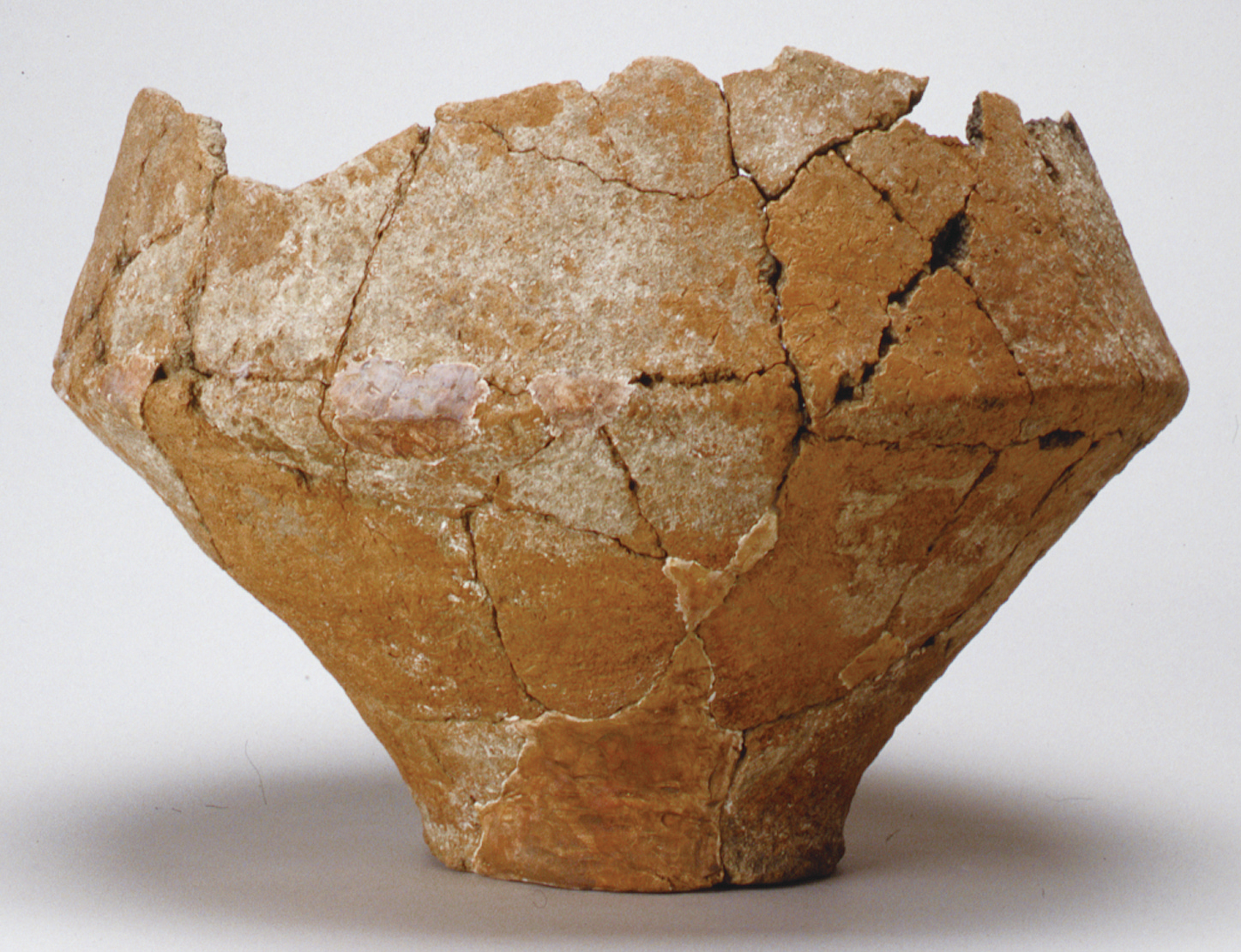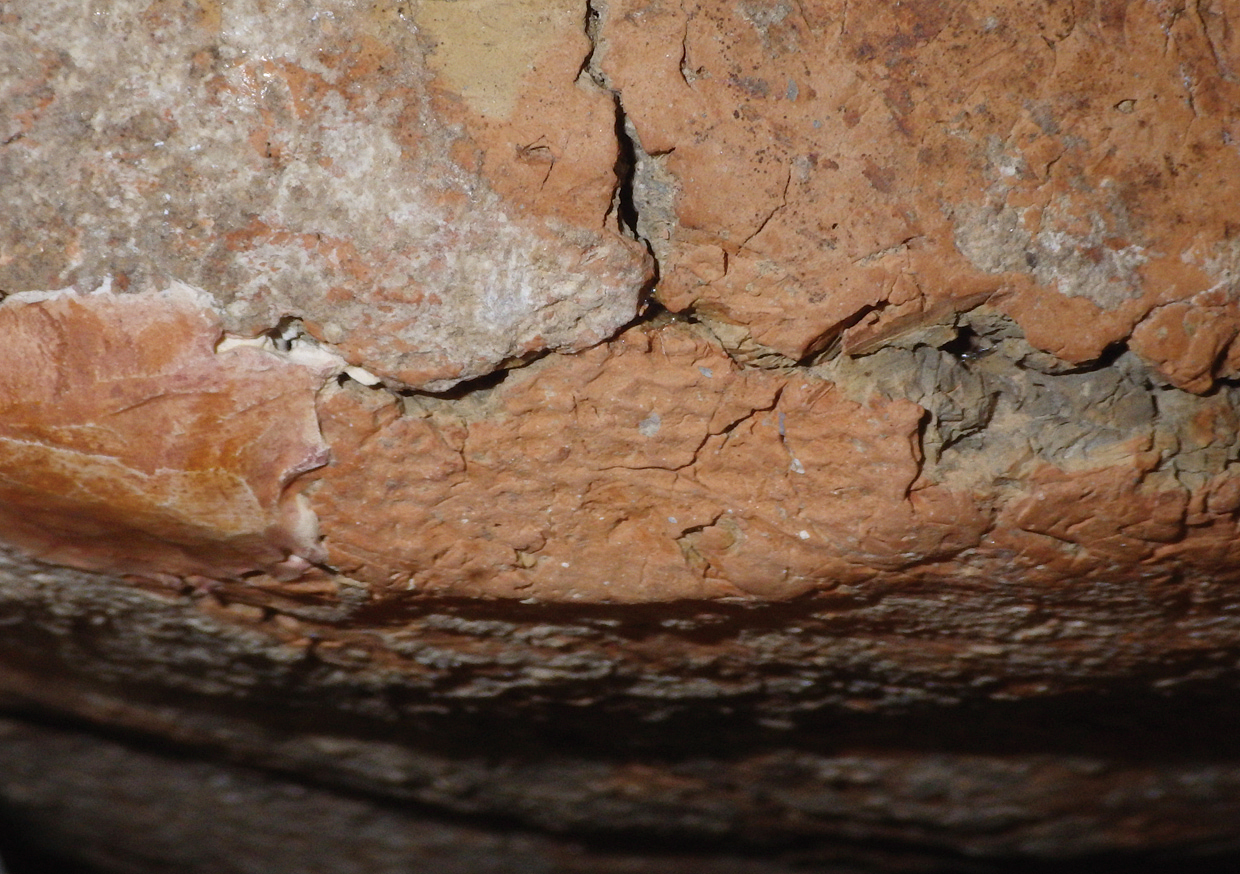B56
A Neolithic jar from Upper Mesopotamia
pottery in the early farming society
Until 1950’s, invention of pottery vessel had been believed as an element of “Neolithic Revolution” which first occurred in West Asia. In 1956, when UT team decided to excavate Telul eth-Thalathat, the oldest evidence of farming village was given from Tell Hassuna, Iraq. Pottery in its basal level is coarsely-made, plant-tempered and light-coloured ware, and straight-sided large jar with carination is remarkable in vessel shape. The jar described here was recovered from Telul eth-Thalathat. Such pottery suggests this site was chronologically paralleled with Tell Hassuna, because of the homogeneous attributes demonstrating the same type of pottery. In those days, this fact promised us to provide new data for further studies of early farming society. Although older farming villages were identified in the last several decades, this jar tells the development of craft technology in Neolithic settlement even now; not only for pottery but also for textile known as an element of “Neolithic Revolution” as well, thanks to its impression on outer surface. (Takahiro Odaka)
References
深井晋司・堀内清治・松谷敏雄(編)(1970)『テル・サラサートⅡ 第二号丘の発掘 第三シーズン(1964年)』東京大学イラク・イラン遺跡調査団報告書11、東京大学東洋文化研究所。


